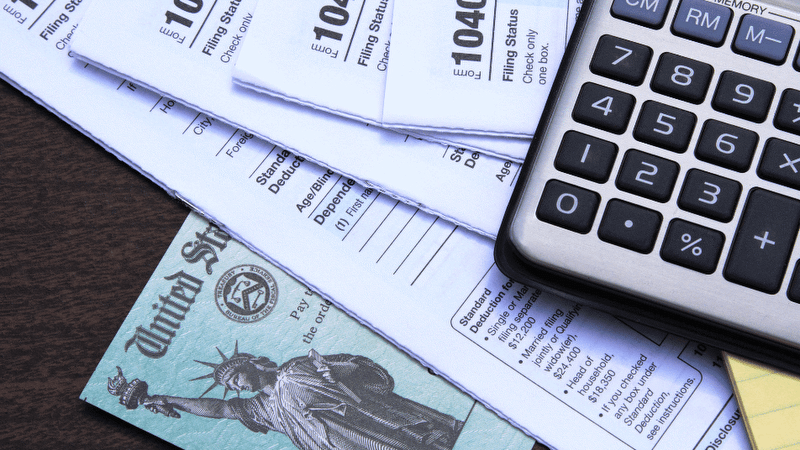After Opening an Account, What's the Next Step?
Learn about the ways to fund your account and get started investing.
Posted on May 2, 2022

Now that your account is open, you can take the next step – funding your account. There are three major ways to fund your IRA, which include making contributions, initiating a transfer, or doing a rollover. You might also be interested in doing a conversion once your accounts are open. Not sure where to start? Here’s a closer look at some of the next steps you can take to fund your new IRA – now or in the future!
Contributions
A contribution is money you personally put into an IRA. This option allows you to make an annual contribution from your personal funds. It’s important to always consult with a knowledgeable CPA in order to understand how much you may contribute personally. You may be able to get a tax-deduction for contributing to your Self-Directed IRA. But remember - every account has its own rules and contribution limit. View the current year contribution limits for your tax benefit.When you make your contributions, they must be made in cash. You have three options when submitting contributions – wire, ACH, or check. If you plan to write a check, please make the check payable to the Quest vesting: Quest Trust Company FBO (Client Name) IRA # (Acct. Number). View the Incoming Funds Instructions.
Transfers
A transfer occurs when you move money from one IRA account to another. This option applies to individuals who have an existing IRA held at another company. A transfer occurs between like accounts (e.g., Traditional to Traditional or Roth to Roth). When you move funds from an IRA at one firm to an IRA account managed by another firm, the transfer isn’t reported to the IRS and no taxes or penalties are incurred. This is because the money in the original IRA account never actually reached the account owner. Please be aware of the following:
- Your current custodian might require a medallion guarantee stamp. If so, you can obtain one by visiting your current banking branch.
- Your current custodian might require the original transfer form. If that is the case, you will have to send Quest the original, signed transfer form.
- You will need to submit a copy of your current account statement along with the Quest Transfer Form.
- You will need to liquidate any investments prior to Quest sending the Transfer Form to help avoid any delays.
Rollovers
A rollover occurs when an individual wants to move funds over from an old employer plan (e.g. 401k, 403b, etc.). A rollover can also be made between IRAs. To initiate a rollover, you must contact the current administrator of the plan and ask them to roll over the funds to Quest. Complete the Quest Rollover Form.
A rollover is considered a distribution and will generate a 1099-R. Provided you deposit the full amount of the distribution into an IRA within 60 days, penalties and taxes will not be assessed. Although direct rollovers are reported to the IRS, they generally aren’t taxable since the money was never made payable to the account holder. Please keep in mind, in most cases, you must have had separation of service from the employer to move the funds to an IRA.
There are two ways to complete a rollover:
- Direct Rollover: The payment of funds will be made directly to Quest Trust IRA. No taxes will be withheld from the distribution.
- 60 Day Rollover: The funds are paid directly to you. You have 60 days to get the full amount of the distribution into your IRA at Quest. Keep in mind, taxes will be withheld from the distribution from the plan or IRA. You will have to use non-IRA funds to satisfy rolling over the full amount of the distribution. This type of rollover is allowed once per twelve calendar months from the date the rollover was received.
Conversions
A conversion allows you to move funds from a tax-deferred IRA to a tax-free IRA. (e.g. Traditional to a Roth. Please be aware that a conversion to a Roth IRA is a taxable event. The non-taxed portion of the converted amount will be added to your modified adjusted gross income for the year. A couple of reasons to do a conversion are below:
- It's a way to endure tax-free growth if you are unable to participate in a Roth IRA because of income restrictions.
- Pay taxes on the smaller amount now, and watch your earnings grow tax free! By doing a conversion and paying taxes early on, it helps your tax-free bucket of money grow bigger faster!
Important Dates
To learn more about the next steps, follow our Quest Guide to transfers and rollovers. You’ll also want to keep these important dates in mind!
- April 15th (Tax Filing Deadline) - This is the deadline to make a previous year contribution to a Traditional IRA, Roth IRA, Coverdell ESA, or Health Savings Account.
- October 15th (Tax Filing Deadline plus extensions) - This is the deadline to make a previous year contribution to a SEP IRA or SIMPLE IRA.








